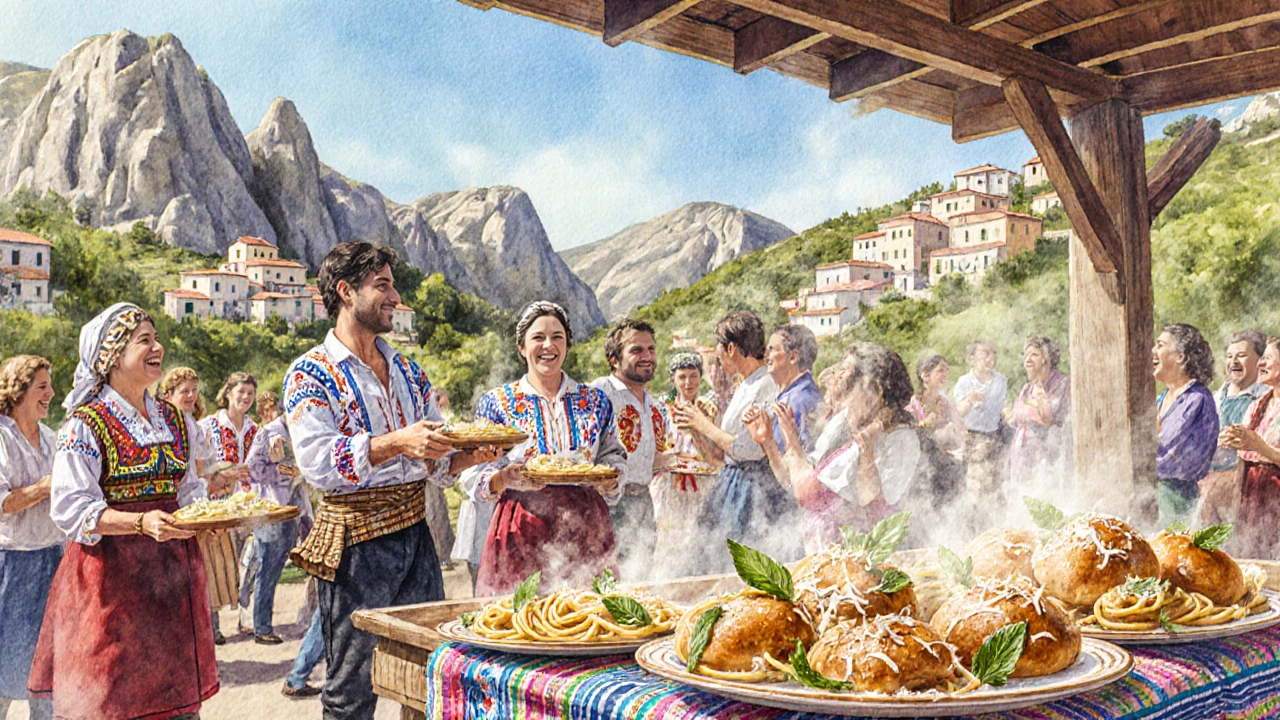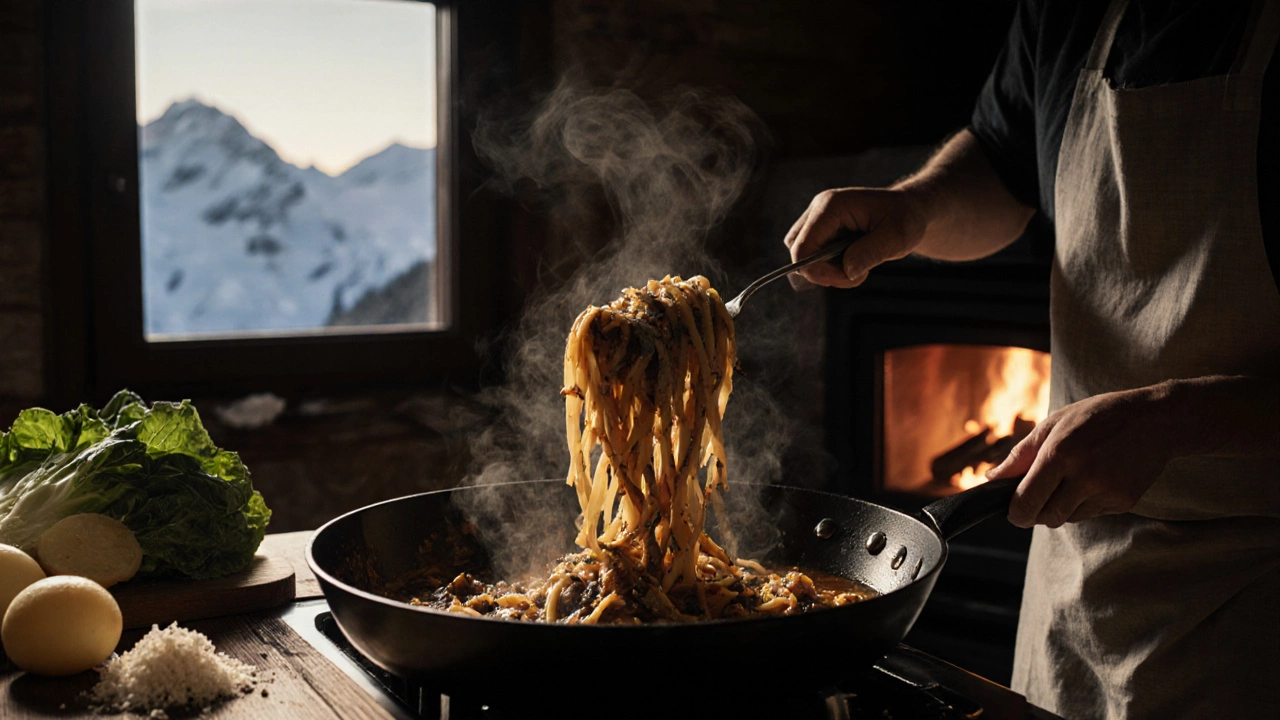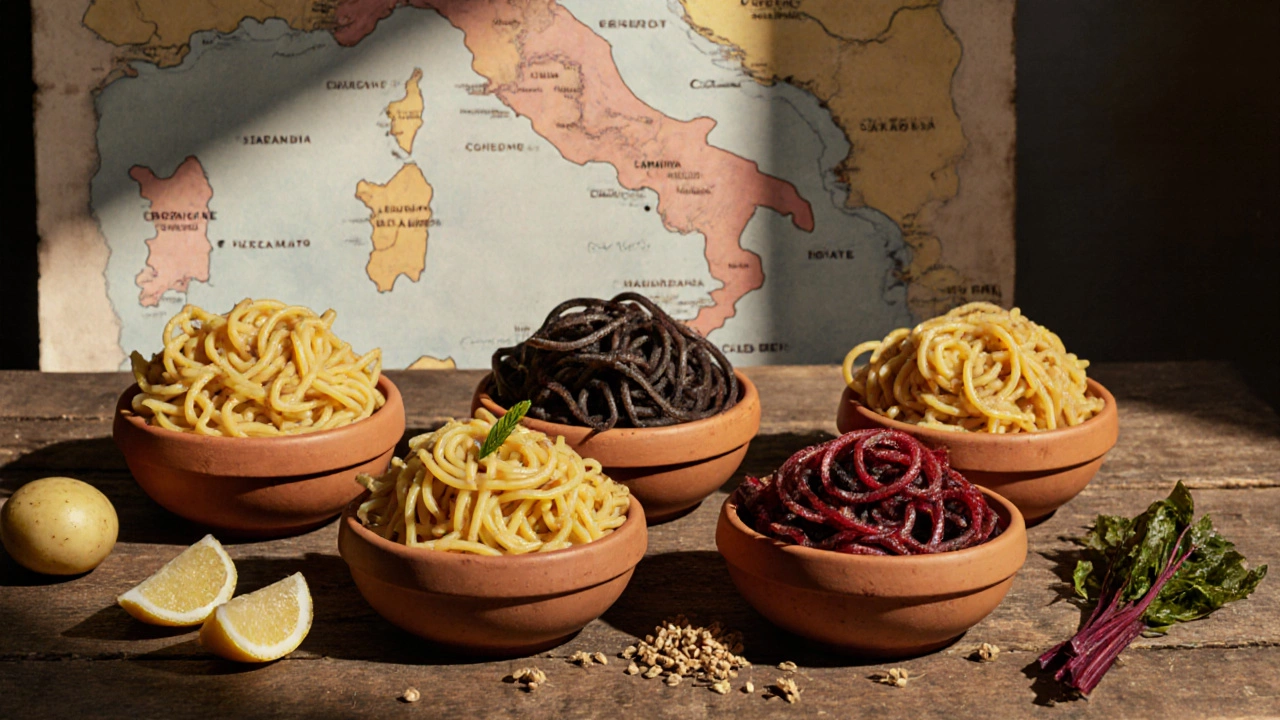Rare Pasta Cooking Time Calculator
Cooking Guide
Italy's rarest pasta varieties require special attention. Use this calculator to get the perfect cooking time for your authentic Italian noodle experience.
Select a pasta type to see cooking instructions.
When you think of Italian food, you probably picture spaghetti, penne, or maybe orecchiette, but Italy hides dozens of noodle shapes that few outsiders ever see. Rarest Pasta in Italy is a term that captures those ultra‑local, often season‑bound creations that are tied to a single village, a centuries‑old family recipe, or a protected geographical indication. Below we’ll uncover which pasta truly earns the title of the rarest pasta Italy can offer, why they’re so scarce, and how you can actually taste them without hopping on a scooter in a remote hamlet.
Key Takeaways
- True rarity comes from limited production, geographic protection, and seasonal ingredients.
- Five pasta varieties - Culurgiones, Pizzoccheri di Valtellina, Strozzapreti di Sorrento, Pasta della Val d'Agri, and Busiate di Scialatelli - consistently rank as the most elusive.
- Most of these noodles are made by hand, often by a single family or cooperative.
- Visiting local festivals, agriturismos, or specialty shops is the best way to try them.
- When cooking rare pasta, respect the traditional sauce pairing and short cooking times.
What Makes a Pasta Rare?
Rarity isn’t just about low sales numbers; it’s a combination of three factors:
- Geographic exclusivity - The pasta is produced in a specific micro‑region, often protected by a Indicazione Geografica Protetta (IGP) or Denominazione di Origine Controllata (DOC).
- Limited production scale - Hand‑shaped by a handful of artisans, sometimes only a few hundred kilograms per year.
- Ingredient rarity - Uses local, seasonal foods such as wild mushrooms, chestnut flour, or even goose meat.
These constraints mean you’ll rarely see the pasta on supermarket shelves, and even regional restaurants may only serve it on special occasions.
Top Contenders for the Rarest Pasta
Below is a snapshot of the five noodles that experts and food historians agree are the most hard‑to‑find across Italy.
| Pane | Region | Main Ingredients | Traditional Pairing | Why It’s Rare |
|---|---|---|---|---|
| Culurgiones | Sardinia (Ogliastra) | Semolina flour, potatoes, mint, pecorino | Tomato‑sage sauce | Hand‑rolled by a single cooperative; seasonal potato harvest |
| Pizzoccheri di Valtellina | Lombardy (Valtellina) | Buckwheat flour, potatoes, cabbage, butter | Butter‑sage broth | Buckwheat flour only grown in narrow alpine valleys |
| Strozzapreti di Sorrento | Campania (Sorrento Peninsula) | Wheat flour, egg, lemon zest | Lemon‑garlic olive oil | Made on demand by a single family shop; limited to summer lemons |
| Pasta della Val d'Agri | Basilicata (Val d'Agri) | Durum wheat, red beetroot dye | Rich ragù of local pork | IGP‑protected; only two artisanal mills produce it |
| Busiate di Scialatelli | Calabria (Cosenza) | Durum wheat, seaweed (cavolo di mare) | Tomato‑fish sauce | Seaweed harvested by hand, only in spring tides |
Each of these noodles tells a story about the land, the climate, and the people who keep a centuries‑old craft alive.

How to Find and Experience These Noodles
Tracking down rare pasta is part adventure, part culinary pilgrimage. Here’s a quick roadmap:
- Local festivals: Many villages host an annual “Festa della Pasta” where the rarity becomes a showcase. For example, the Culurgiones Festival in Ogliastra usually takes place in early August.
- Agriturismo stays: Small farms that produce the pasta often open their kitchens to guests. Booking a weekend in Valtellina gives you a taste of authentic pizzoccheri straight from the stovetop.
- Specialty retailers: Shops like La Bottega del Gusto in Milan or Antica Pasta Tricolore in Rome maintain limited stock of IGP‑approved noodles.
- Online micro‑producers: Some families ship small batches (often under 1kg) through curated platforms such as Alimentari d’Arte. Expect a premium price due to the hand‑crafted nature.
When you finally get a bag, check the “best‑by” date - many of these pastas are meant to be cooked within a few months of production to preserve texture and flavor.
Cooking Tips for Rare Pasta
Because these noodles are often thinner, denser, or infused with unusual ingredients, the usual “boil for 10 minutes” rule rarely applies.
- Salt the water properly: Use about 12g of sea salt per litre; the mineral content helps accentuate the subtle flavors.
- Short cook time: Hand‑shaped pasta usually cooks in 2-4minutes. Test a piece early to avoid mushiness.
- Reserve pasta water: The starchy water is essential for binding the traditional sauce, especially for butter‑based pairings like pizzoccheri.
- Finish in the pan: Transfer the drained noodles to the sauce pan, toss for 30seconds, and finish with a drizzle of high‑quality extra‑virgin olive oil.
- Serve immediately: Freshly cooked rare pasta loses its texture fast; plan your plate timing accordingly.
Following these steps respects the artisans’ intent and ensures you taste the pasta as it was meant to be experienced.

Preserving the Heritage - Why Rarity Matters
Beyond the culinary thrill, these elusive noodles safeguard cultural identity. In many mountain valleys, the craft of making buckwheat pizzoccheri is taught only to family members, preventing the loss of centuries‑old techniques. Likewise, the bright beet‑red hue of Pasta della Val d'Agri is a visual cue that the pasta originated from a specific terroir, reinforcing regional pride.
Supporting these producers-whether by buying a modestly sized package or sharing their story on social media-helps keep the traditions alive. When demand grows responsibly, younger generations see a viable path to continue the art, preventing a future where the pasta disappears entirely.
Frequently Asked Questions
Which pasta is considered the single rarest in Italy?
Culurgiones from Sardinia often tops the list because it is produced by a single cooperative, uses seasonal potatoes, and is protected by an IGP label, making it extremely limited in volume.
Can I buy rare pasta online?
Yes, a few niche e‑commerce sites partner with artisanal families to ship small batches. Expect higher prices and limited quantities.
Do these pastas require special sauces?
Traditional pairings are part of the heritage. For example, pizzoccheri are meant to be tossed in a butter‑sage sauce, while culurgiones shine with a simple tomato‑sage topping.
Are there gluten‑free versions of these rare pastas?
A few producers experiment with alternative flours (e.g., rice or chickpea) for regional specialties, but authentic versions generally use wheat or buckwheat, so they contain gluten.
How long can I store rare pasta at home?
Because many are made without preservatives, aim to use them within 2-3months. Keep them in a cool, dry place, and consider freezing in airtight bags if you need longer storage.

